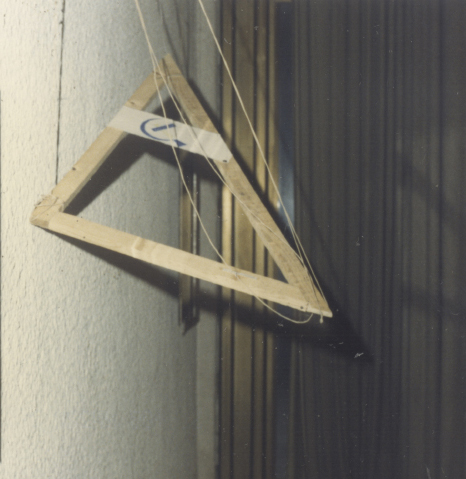Supremaconst Wedge, Installation, wood, rope, fabric, 1986, FILOART
A triangle made of three wooden bars, a rope, and a piece of fabric. No bronze, no marble, no durable materials. No pedestal the work almost floats in the air.
“Supremaconst wedge” is made from materials that could be destroyed with a hand movement or disappear in a small fire. It quotes works of three artists: El Lissitzky “Beat the Whites with the Red Wedge” 1919, Vladimir Tatlin’s “Counter-Relief” 1914-15 and Malevch’s “Suprematistic Cross” 1920-1921.
Although young modern artists of the “young state” of the USSR, where initially involved in building the “new art vision in the new society”, the “cleansing” from “Bourgeoisie elements” started years later.
Some of the artists where branded by the dictatorial state as enemies of the state. Abstract art was dangerous for the state (for Stalin) since the working class wasn’t needed to think, it was there to work and to follow the “great leader”*
Malevich was one of the artists who was imprisoned and fired from his job as a professor.
That’s why Malevich’s “Suprematistic Cross” is shown on the small piece of fabric together with the sickle. It is a quotation of a quotation. In this case FILOART quoted their own work “Diktat V Supremat” (Dictatorship versus Suprematism).
Where are all the bronze busts, the marble statues of the “great” dictators now? What is left of them?
The works and ideas of these three artists show their visionary views today and their influence on the present. Their suprema- tist and constructivist works are the foundation of the “Russian Avantgarde” and also an important part of art history.
Joseph Vissarionovich Stalin was a politician and a dictator in the USSR from 1927 to 1953. Several million of Russian citizens with his orders were killed (between 7 and 20)
